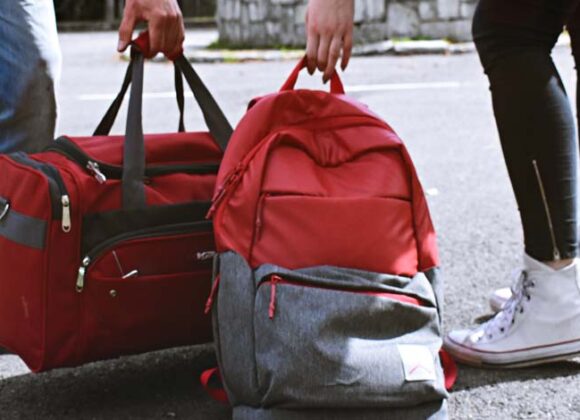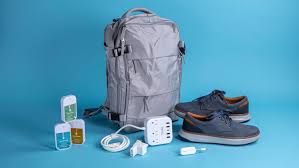🌍 Introduction: Why This Matters
International travel is thrilling—new cultures, cuisines, and experiences await. But one often-overlooked detail can turn your adventure into a tech disaster: power compatibility. If you’ve ever arrived in a foreign country only to find your phone charger doesn’t fit the outlet, or worse, your hair dryer starts smoking, you’ve encountered the classic travel dilemma.
That’s where voltage converters and travel adapters come in. These two tools are essential for keeping your electronics safe and functional abroad. But they’re not the same—and using the wrong one can damage your devices or render them useless.
In this guide, we’ll explore the differences between voltage converters and travel adapters, how they work, when to use them, and why understanding their roles is crucial for any traveler.
🔌 What Is a Travel Adapter?
Let’s start with the simpler of the two: the travel adapter.
A travel adapter is a small device that allows you to plug your electronic device into a foreign outlet. It doesn’t change the electricity—it simply makes your plug fit the socket.
✅ Key Features:
- Function: Changes plug shape, not voltage.
- Use Case: Ideal for dual-voltage devices like smartphones, tablets, and laptops.
- Size: Compact and lightweight—easy to pack.
- Cost: Generally inexpensive.
🔍 Example:
Imagine you’re traveling from the U.S. to France. Your phone charger has a Type A plug (flat prongs), but France uses Type C or E sockets (round holes). A travel adapter lets your plug fit into the French outlet.
So when someone asks, “What is a travel adapter?”—the answer is simple: it’s a plug-shape translator.
⚡ What Is a Voltage Converter?
A voltage converter, on the other hand, is a more complex device. It changes the electrical voltage coming from the wall to match what your device needs.
✅ Key Features:
- Function: Converts voltage (e.g., 220V to 110V or vice versa).
- Use Case: Necessary for single-voltage devices like older hair dryers, curling irons, or electric shavers.
- Size: Bulkier than adapters.
- Cost: More expensive than adapters.
🔍 Example:
You bring a 110V hair dryer from the U.S. to Italy, where the voltage is 220V. Without a converter, plugging it in could cause overheating, sparks, or permanent damage. A voltage converter steps down the voltage so your device can operate safely.
🌐 Global Voltage Standards
Different countries use different voltage and frequency standards. Here’s a quick overview:
| Region | Voltage Range | Frequency | Common Plug Types |
|---|---|---|---|
| North America | 110–120V | 60Hz | A, B |
| Europe | 220–240V | 50Hz | C, E, F |
| Asia | 220–240V | 50Hz | C, D, G, I |
| Australia/NZ | 230V | 50Hz | I |
| UK | 230V | 50Hz | G |
Knowing your destination’s voltage and plug type is essential before packing your electronics.
🧠 Adapter vs Converter: What’s the Difference?
Let’s break it down even further:
| Feature | Travel Adapter | Voltage Converter |
|---|---|---|
| Changes Plug Shape | ✅ Yes | ❌ No |
| Changes Voltage | ❌ No | ✅ Yes |
| For Dual Voltage | ✅ Yes | ❌ No |
| For Single Voltage | ❌ No | ✅ Yes |
| Common Devices | Phones, laptops, cameras | Hair dryers, electric razors |
| Size & Portability | Small and light | Bulkier and heavier |
| Price Range | $5–$20 | $20–$100+ |
🔍 How to Know If You Need a Converter
Check your device’s power label. Most modern electronics have a label near the plug or on the charger that reads something like:
Input: 100–240V, 50/60Hz
This means the device is dual voltage and can be used worldwide with just a travel adapter.
If the label says:
Input: 110V, 60Hz
Then it’s single voltage, and you’ll need a converter in countries with 220–240V power.
🧳 Common Travel Scenarios
Let’s look at a few real-world examples:
📱 Smartphone
- Voltage: Dual (100–240V)
- Needs: Travel adapter only
- Why: Most phones and chargers are built for global use.
💻 Laptop
- Voltage: Dual (100–240V)
- Needs: Travel adapter only
- Why: Laptop chargers are designed for international compatibility.
💇 Hair Dryer (Older Models)
- Voltage: Single (110V)
- Needs: Voltage converter + adapter
- Why: High-wattage devices require voltage conversion to avoid damage.
🪒 Electric Razor
- Voltage: Depends on model
- Needs: Check label—may need converter
- Why: Some are dual voltage, others are not.
🧠 Smart Tip: Use Dual-Voltage Devices
If you travel frequently, consider investing in dual-voltage appliances. Many modern hair dryers, curling irons, and razors are designed for international use. This eliminates the need for a bulky converter and simplifies your packing.
🧰 Combo Devices: Adapter + Converter
Some products combine both functions into one unit. These adapter-converter combos are convenient but can be misleading. Always read the specs carefully:
- Pros: One device for both plug and voltage compatibility.
- Cons: Often limited in wattage; may not support high-powered devices.
⚠️ Risks of Using the Wrong Device
Using a travel adapter when you actually need a voltage converter can be disastrous.
🔥 Potential Consequences:
- Overheating
- Device failure
- Electrical fires
- Permanent damage
Always double-check your device’s voltage requirements before plugging in abroad.
🧭 Choosing the Right Adapter or Converter
Here’s a checklist to help you decide:
- Know your destination’s plug type and voltage.
- Check your device’s voltage label.
- Determine if your device is dual or single voltage.
- Choose a travel adapter for dual-voltage devices.
- Choose a voltage converter for single-voltage devices.
- Consider a combo unit if you need both.
🛍️ Buying Guide: What to Look For
🔌 Travel Adapter:
- Multiple plug types
- Compact design
- USB ports for charging
- Surge protection
⚡ Voltage Converter:
- Wattage rating (match your device)
- Compatibility with electronics and appliances
- Built-in adapter plugs
- Safety certifications
🌟 Popular Brands & Models
While I won’t endorse specific products, here are some well-known brands that offer reliable travel adapters and converters:
- Ceptics
- BESTEK
- Epicka
- TESSAN
- Krieger
Always read reviews and check compatibility before purchasing.
🧠 Pro Tips for International Power Use
- Bring extras: Adapters are small and easy to lose.
- Use a power strip: One adapter + multiple devices = efficient charging.
- Avoid high-wattage appliances: Consider buying local versions or dual-voltage models.
- Label your gear: Helps avoid confusion in shared accommodations.
🏁 Conclusion: Travel Smart, Power Smarter
Understanding the difference between a voltage converter and a travel adapter isn’t just technical trivia—it’s essential travel knowledge. Whether you’re backpacking through Europe, attending a conference in Asia, or vacationing in Australia, the right power solution keeps your devices safe and your trip stress-free.
So next time you pack, remember:
- A travel adapter helps your plug fit.
- A voltage converter helps your device survive.
And if you ever find yourself wondering, “What is a travel adapter?”—you’ll know it’s the unsung hero of international travel.




